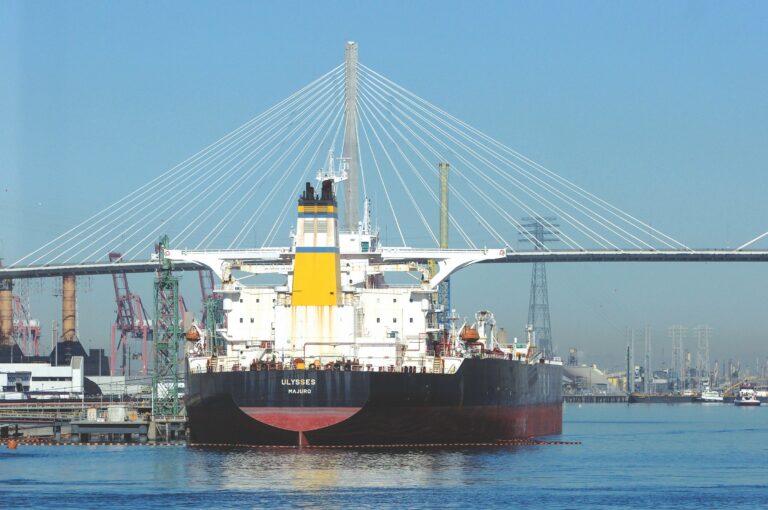
Total cargo volume at both the Port of Los Angeles and the Port of Long Beach dropped in July, with executives at both agencies attributing the lull to changing trade routes and high inventories domestically.
On the year, both ports are down about a quarter from where they were last year, further bolstering the case that 2022’s record-setting import numbers and associated logjam of cargo ships anchored offshore was an outlier.
L.A. moved a total of 684,291 TEUs – 20-foot equivalent units, the typical measurement of cargo volume by container – in July, representing a 27% drop from last July. Meanwhile, Long Beach saw movement of 578,249 TEUs, a 26.4% drop from last year. Leaders are predicting a tempered rise in imports in accordance with anticipated consumer spending for the rest of the year.
“I am confident we will see our numbers improve as we work with industry partners to rebuild our market share,” Mario Cordero, chief executive at the Port of Long Beach, said in a statement. “Looking ahead in the near term, however, we anticipate a modest ‘peak season’ for shipping as consumers spend a little less this year on back-to-school supplies and gifts through the holiday season.”
Imports, as usual, paved the way for both ports. L.A. saw 364,208 import TEUs in July (down 25%), along with 110,372 export TEUs and 209,710 empties. Long Beach had 271,086 import TEUs (down 27.9%), 90,134 export TEUs and 217,030 empties.
Through July, L.A. has moved a total of 4,821,670 TEUs, while Long Beach has moved 4,310,925.
It’s not just the San Pedro Bay ports that are experiencing a dip at the midpoint of the year. According to research compiled by Jones Lang LaSalle Inc., ports in New Jersey, Georgia, Virginia and South Carolina have seen similar reductions in cargo volumes since May, while Houston’s port climbed slightly. And for all of the ballyhooing about East and Gulf coast ports siphoning business from the San Pedro Bay, the ports of L.A. and Long Beach combined for 49% of June imports among the nation’s five major port complexes – which include the Northwest Seaport Alliance in Washington state, the Port Newark-Elizabeth Marine Terminal at New York-New Jersey, the Port of Houston, the Port of Savannah in Georgia and the Port of Charleston in South Carolina.
JLL’s research, which considered the first six months of the year, indicated that port leaders were cautiously bullish on the remaining half of the year. Gene Seroka, executive director of the Port of L.A., noted that domestic product inventory remains high, and that will influence how manufacturers and retailers export and import. (Seroka canceled his customary media briefing in August.)
“Global trade has eased as warehouse inventories of retailers and manufacturers remain elevated,” Seroka said in a statement. “American consumers are continuing to spend and are likely to find more discounted items this year as we move into fall fashion and year-end holiday season.”
